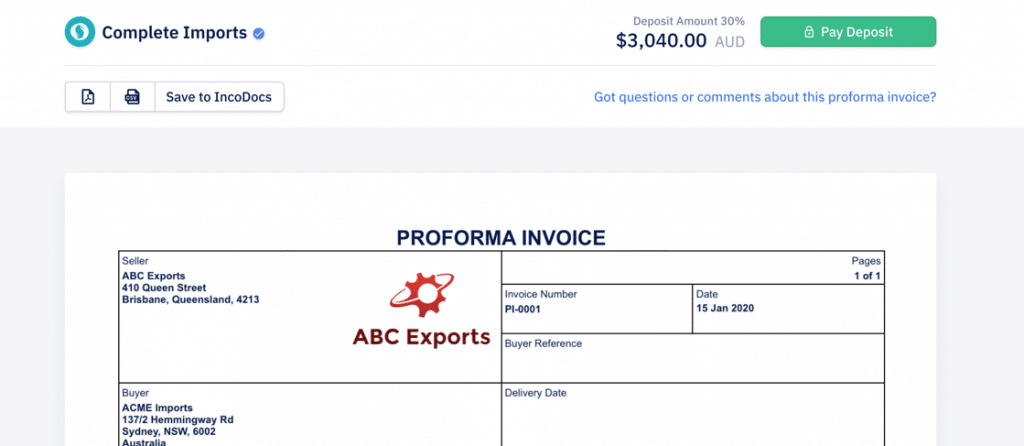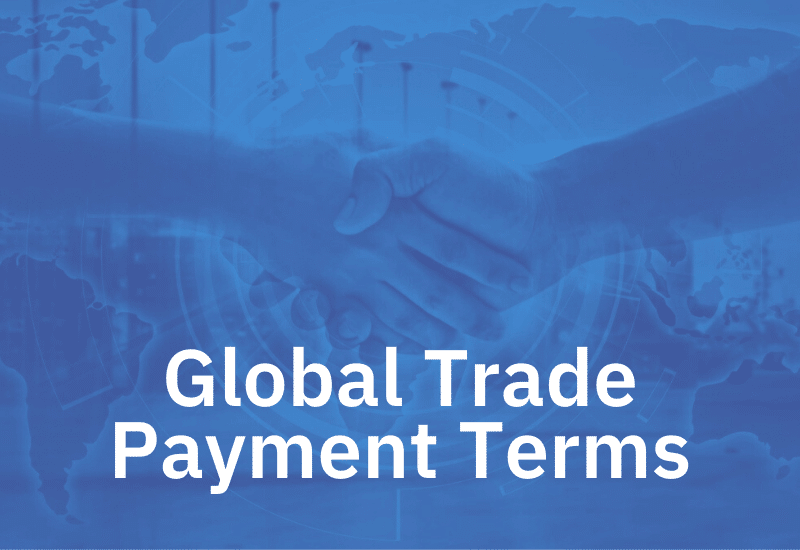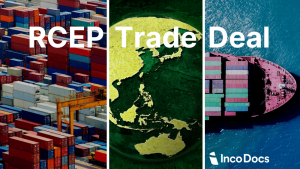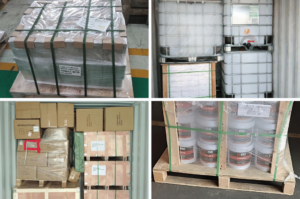Importers and exporters involved in global trade connect to negotiate and agree on the terms for goods to be sold. Buyers and sellers will agree to all product details, pricing, Incoterms®, method of shipment, delivery details, and the agreed payment terms and methods, including the specific details of payment in international trade. These details will be represented in Purchase Orders, Proforma Invoices and Sales Contracts that are countersigned by both parties.
There is considerable risk involved in global trade, at some point the exporter will have to decide at what point they require full payment of goods. Some payment terms will be more favorable to the exporter or to the importer, it’s up to the 2 parties to negotiate and agree on these critical trade terms. If there has been a good trading history between the buyer and seller and a high level of trust has been built up over time, then the seller may agree to a payment term that is more favorable to the importer.
Importers and exporters must understand the different payment terms that are available and the costs & risks that are associated with each party. This article and info-graphic explains the types of payment terms that buyers and sellers can agree to for the global sale of goods.

International Payment Terms agreed by Importers and Exporters for Global Trade
Cash in Advance – Lowest risk for Exporter
Cash in Advance is the one of the most secure method of payment for the seller. Suppliers may often request a deposit amount to get the products under production, then request the balance amount of the invoice or contract before the goods leave the supplier’s warehouse. Therefore there is no risk to the supplier on not receiving full payment for the goods.
Letters of Credit (L/C)
A Letter of Credit (L/C) or a “Documentary Credit” (D/C) is a legally binding contract between the buyer and seller’s bank. An L/C is a commitment by a bank on behalf of the buyer that payment will be made to the exporter (beneficiary), provided that the terms and conditions stated in the L/C have been met, as verified through the presentation of all required documents. Usually, this includes providing a copy of the Bill of Lading to confirm that the goods have been shipped. The buyer establishes credit and pays their bank to render this service. This method of payment guarantees the release of funds to the exporter once the conditions are fulfilled, offering security for both parties. The importer’s bank will guarantee the payment of goods and a take up the collection of payment with the buyer. The payment risk is passed onto the buyer’s bank so if the buyer fails to pay then the bank will follow up the collection of payment from the buyer.
The importer’s bank will guarantee the payment of goods and a take up the collection of payment with the buyer. The payment risk is passed onto the buyer’s bank so if the buyer fails to pay then the bank will follow up the collection of payment from the buyer.
A Letter of Credit is a more expensive option as banks will often charge a percentage of the transaction. The process to complete a Letter of Credit is costly and very time consuming to draft and confirm all of the contract details between the buyer, seller and their banks. There are many types of Letters of Credits that can be used, if you are interested in executing a Letter of Credit you should meet with your local bank Manager to understand all finer details.
Documentary Collection (D/C)
Documentary collections is a payment term where the seller will rely on their bank (the remitting bank) to collect the payment of funds from the buyer’s bank (collecting bank). Documentary collections are generally used when there is already an established trading relationship between the buyer and seller. They are a cheaper and less time consuming option compared to the Letter of Credit process mentioned above.
Under the Documentary Collection method of payment, the buyer will ship the goods then submit a “collection order” to its bank with instructions to release the original documents to the buyer upon receipt of the buyer’s payment, ensuring that the buyer’s payment obligation is clearly defined and met. It can be simplified as below:
- Exporter (seller) ships the goods onboard the carrier.
- Exporter then submits the shipping documents and a “collection order” to it’s bank (remitting bank) instructing it to release the documents to the buyer when the goods have been paid.
- The remitting bank then forwards the documents, draft and collection instructions to the buyer’s bank (collecting or presenting bank).
- The buyer’s bank will carry out the “collection order” from the seller to collect the payment from the buyer. Upon receipt of payment from the buyer, the buyer’s bank will remit the payment to the seller’s bank, which will then transfer the funds to the seller.
There are 2 types of Documentary Collections:
Document against Payment (D/P)
This is also referred to as a “Sight Draft” or “Cash Against Documents”. In this case the buyer’s bank (collecting bank) will only provide the documents and collection order to the buyer once the buyer has made payment.
Document against Acceptance (D/A)
In this case the buyer’s bank (collecting bank) has approved a credit extension that allows the buyer to make payment of the goods at a future date.
Open Account
If the seller has built up trust and has a great business relationship with the buyer, then they may offer the payment of goods on an open account. Under this arrangement the seller will ship the goods without receiving full payment of goods, which are agreed to be paid at a later date. The buyer and seller can negotiate the length of the payment, which can be anywhere from 7, 30, 60 or 90 days after the goods have been shipped or delivered. This is not a secure payment option for the seller as they bear all risk of non-payment of goods. In some cases the seller will buy export credit insurance to cover the risk of non-payment of goods.
On Consignment – Highest risk for Exporter
If exporters choose to sell goods using the consignment method of payment, they agree to supply the goods to the importer, whereby the importer is not obliged to pay for the goods until the importer has on-sold them. Consignment in international trade is a variation of open account in which payment is sent to the exporter only after the goods have been sold by the foreign distributor to the end customer. This method ensures that the receipt of payment is only triggered once the goods have been sold to the end customer, making it a highly risky option for exporters. So essentially the exporter agrees to bear the risk associated with placing the goods at the buyer’s warehouse and retains ownership of the goods until they have been sold. It is essentially an extension of an “open account” as mentioned above, and is generally only used when the exporter and import have a long standing relationship and enough trust to proceed with this arrangement. This method can give the seller the ability to sell new products into new markets without putting large cashflow pressures on their partner importers and distributors.
How Exporters and Importers use IncoDocs to create Quotations, Proforma Invoices & Commercial Invoices to close more deals and get paid fast.
- Buyers and Sellers create a free account
- Sellers use International trade templates to easily create Proforma Invoices and Commercial Invoices to share with buyers
- Buyers click to comment, accept and countersign invoice and purchase order contracts online
- Buyers have click to pay options to make International T/T wire transfers in a few clicks








